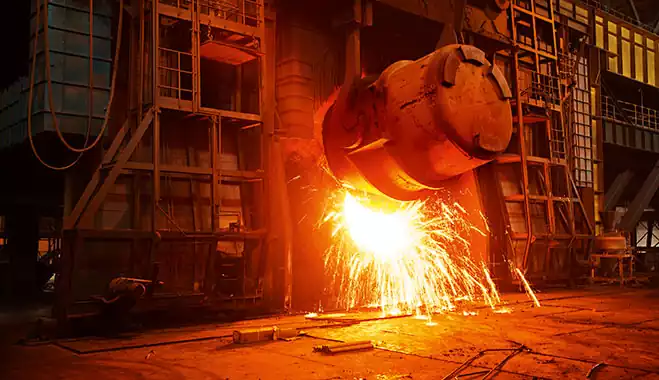
Reasons for the expected volatility in Chinese steel prices
1. US Fed rate hike?: Global factors like tightening of the US Fed’s monetary policy, have set off a “wave of interest rate hikes” amongst most countries. Global inflationary pressures have further intensified, and economic growth has slowed down and is expected to remain so for quite some time. As a result, demand for commodities such as steel will decline, it is being felt.
The US Fed is expected to announce its interest rate hike policy and naturally all eyes are on the same. There is an 80% chance that the US Fed will raise interest rates by 75 points. The markets may relax a bit and futures prices may also rebound post-the Fed announcement. If the Federal Reserve unexpectedly raises interest rates by 100 points, it will suppress global commodity prices.
2. Infra investment may boost steel prices: Infrastructure investment is the biggest bright spot this year, as per a report. which is good news for steel demand. This can perhaps be attributed to the government’s encouragement of infrastructure-led investment. From October to November, the growth rate in infrastructure investment is expected to reach an optimistic 11%, which will continue to drive the recovery of steel demand.
Investment in fixed assets and the manufacturing industry have been generally positive. From mid-to-late August, the growth rate in investment in fixed production reached 5.8%. Impacted by Covid, fixed asset investment fell to 5.5% in September, but the growth rate was relatively high. From October to November, the national fixed asset investment growth rate is expected to reach an optimistic 7%, which will induce considerable increase in demand – a prospect that, in particular, is the core reason for the optimism about domestic steel prices over the next few months. China’s manufacturing investment increased 10% in January-August, and in August, by 9.9%. In the second half of this year, the growth rate in manufacturing investment may continue to increase, reaching 11%, which will boost demand for products such as sheets and strips.
3. Realty still a drag: Real estate investment did not improve significantly in January-August, showing a negative growth of 37% in newly started projects. This segment will continue to deteriorate, or reach a negative growth of 40% and not improve significantly in the short term. However, after the policy of “guaranteeing the handover of buildings” was implemented, the number of completed projects gradually increased, and the negative growth rate has significantly improved. The increase in the number of completed projects will not help the demand for rebar, but will drive the demand for decorative thin plates, steel pipes and other products.
Real estate will continue to have a negative impact on steel demand in the second half of this year and till the first half of next year, especially rebar demand.
4. Production cut pressures: Steel production is under increasing pressure, but is likely to rebound in the short term or y-o-y. Steel production fell by 5.7% in the January-August period, or nearly 42 million tonnes (mnt), a very large drop. From August to September, output has gradually increased. The latest data released in August showed that the daily output was 2.7 mnt, and it is expected to continue to increase from September to 2.8 mnt. In terms of total volume, it is not very high and even if the daily output is restored to 2.8 mnt in September, the output pressure will be relatively controllable.
In terms of production, two factors should be kept in mind.
a) The decarbonisation related environmental production cuts to be implemented in autumn and winter this year in the surrounding areas of Beijing, Tianjin and Hebei, and
b) The crude steel production cut policy applicable across the country.
Sustained production cuts may support a price uptick.
5. Inventory pressure eases: In terms of inventory, the pressure has gradually decreased in recent months. Since late June, the social pool has declined for 12 consecutive weeks, and the inventory of building materials has been absorbed in particular. The decline in inventories has two advantages, one is stable market sentiment, and the other is increased liquidity. Once a more obvious opportunity appears, traders will look for a price bottom.
Outlook
It should be noted that due to the increase in production and the impact of the epidemic, demand growth rate has slowed down in stages, and the inventory increased in recent days. But, this is a short-term mismatch between supply and demand, and the inventory is expected to decline soon.
Fracture stimulation of shale rock, conventionally known as “Fracking or Frac’ing,” has turned America into an energy powerhouse, over the
Billet Billet price improved a little during last week in Iran domestic market from USD 502/mt to USD 503/mt ex-work
Iron ore prices wavered as the market assesses the strength of Chinese demand. Economic indicators suggest that government stimulus is
Steel demand in China is gradually picking up as its economy continues to show signs of improving. However, steel prices

tosan holding company
© All rights of this website are reserved for Tosan Holding.